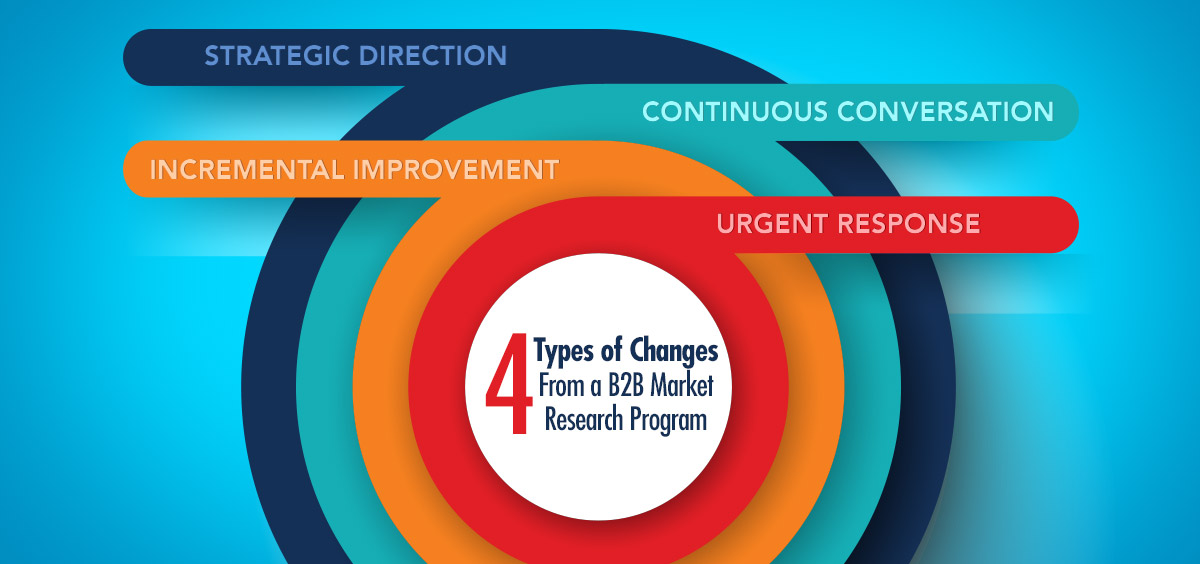
Research and Insights Managers know the first question they must ask of any survey-based research program is: what will you do with the data? Good research and insights data will provide a client with information to make more informed decisions, and data to support the action taken as a result. The insights will not make the decision, and it will not take action on its own. The team collectively must implement the change based on the insights collected. One perennial question over the project or program is time-based, when should the action be taken? We have created a framework to share the four levels of action that can be taken based on any research program here.
1. Strategic Direction –
This research insight is amongst the most valuable, and the most hard-hitting. This type of research provides vision into the future, it must be regular and ongoing, and have a clear circle back to specific actions, investments, and direction for the organization.
2. Continuous Conversation –
This feedback loop allows your team to detect “unknown unknowns”. What competitive issues are arising within our field? Do customers express concern about the value of your product?
3. Incremental Improvement –
This allows for your team to find ways to improve your products on an evolving basis. Often referred to as “evolution not revolution”, these changes are critical to maintaining high levels of NPS.
4. Urgent Response -
This type of feedback loop often falls outside of the research realm, yet plays a critical role in reducing churn and maintaining customers. Capturing urgent responses often comes with PII and therefore is more often tied to “case systems” or CRM data.
Following a feedback program with differing necessities of urgency, implementation, and types of action will set your organization up for continued improvement. No one wants to do daily fire-drills on the strategy of the organization, and no one wants a single customer complaint to bog down a Board of Directors meeting. The Research and Insights team needs to set up the expectations at each level of feedback loops to make sure the success endures and becomes habit.
